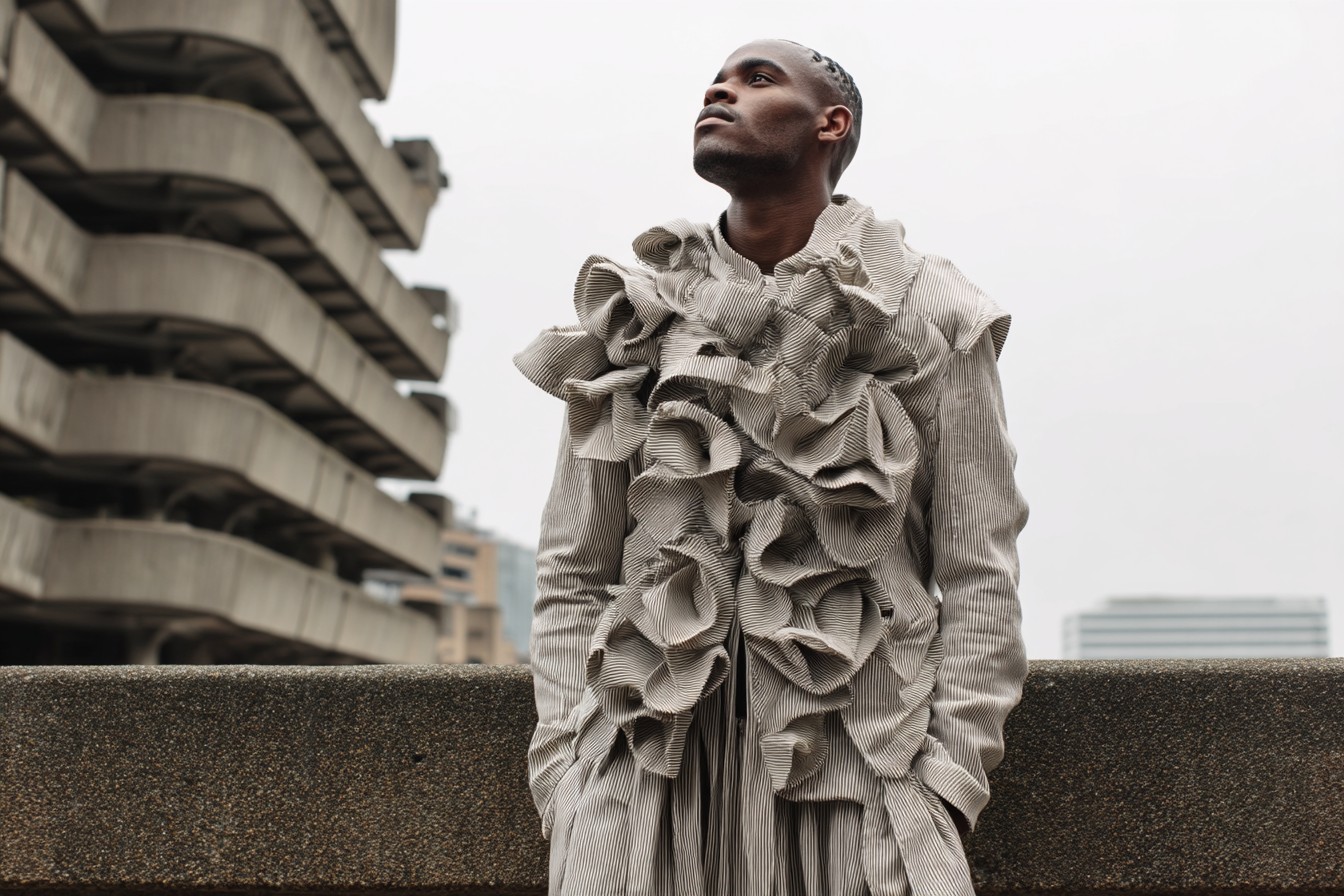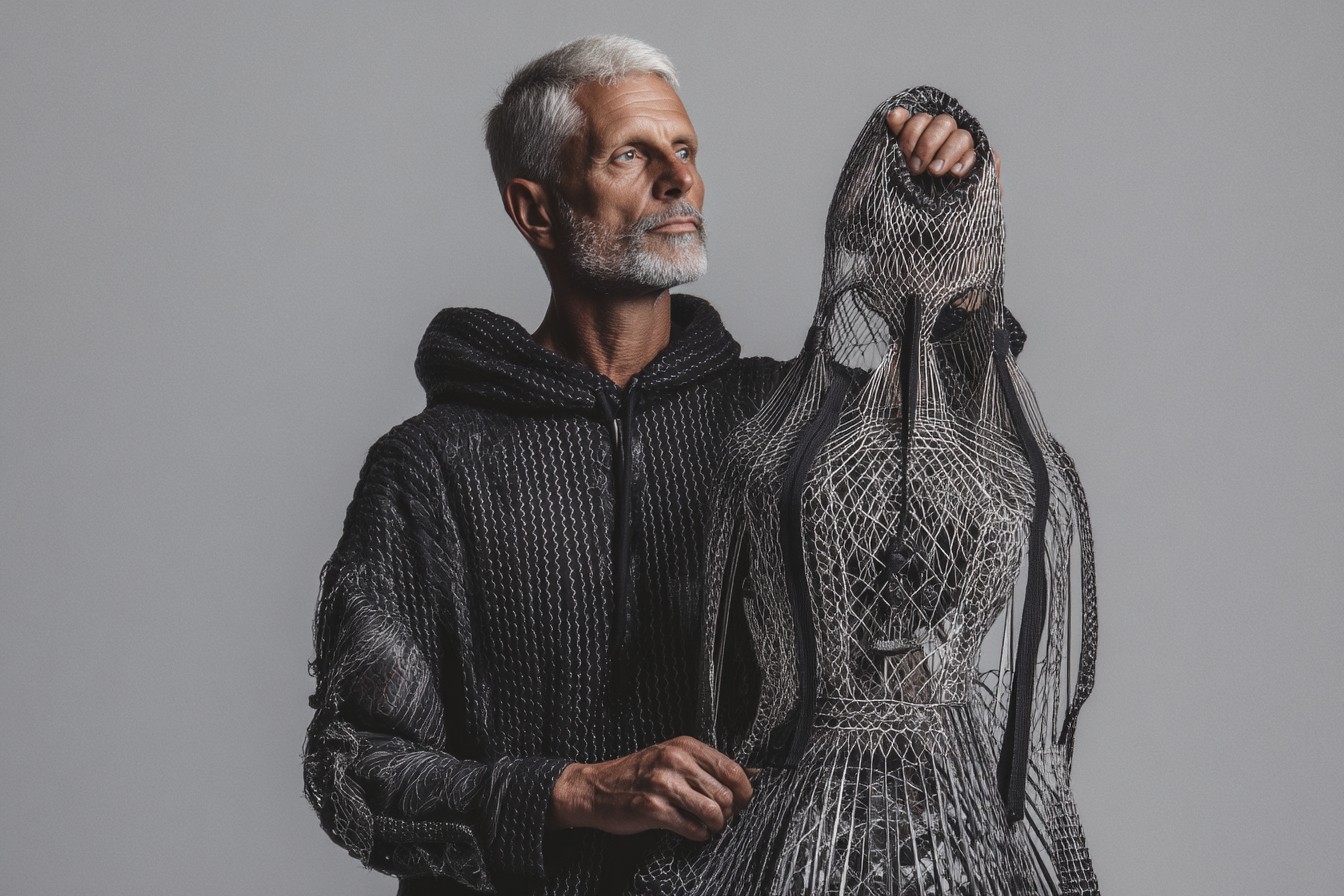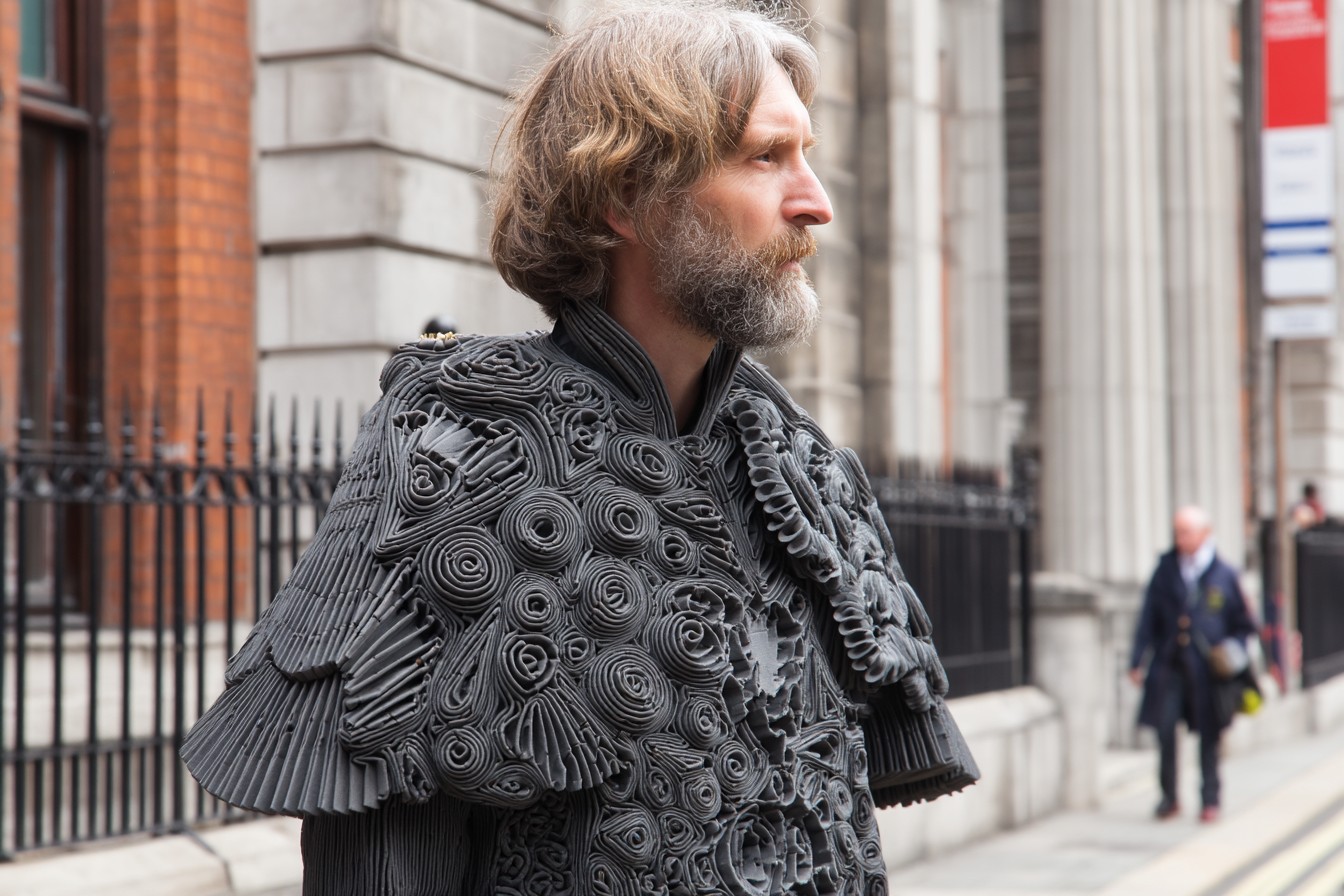The first time I visited a proper British clothing factory, I was 24 and thought I knew everything about menswear. I’d spent years studying fashion history, could bore strangers about the subtle differences between Neapolitan and Roman tailoring, and had strong opinions about pocket square folds that absolutely no one had asked for. But walking onto the factory floor of a small knitwear manufacturer in the Scottish borders – the heavy industrial machines humming, the smell of wool and steam in the air, skilled hands moving with practiced precision – I realized I knew absolutely nothing about how clothes were actually made.
“Been doing it this way for ninety years,” the factory manager told me, a weathered Scotsman who’d started on the factory floor as a teenager and worked his way up. “Though there used to be twenty factories like this in the area. Now we’re one of three left.” He didn’t say this with self-pity, just matter-of-fact acceptance of an industry that had changed beyond recognition during his lifetime.
That visit fundamentally changed how I thought about clothes. Behind every garment is a process, a skill, often a community and a heritage. When British manufacturing began its steep decline in the 1980s and 1990s, we didn’t just lose factories – we lost generational knowledge, regional specialties, and entire communities built around particular crafts. The town where my grandfather once made shoes now contains not a single shoemaker. The Welsh mill that produced blankets for over two centuries closed its doors when I was still in school.

But here’s the thing – not all British manufacturing disappeared. Some survived, adapted, and in recent years, have even begun to thrive again as consumers increasingly care about where and how their clothes are made. The brands maintaining UK production aren’t just preserving heritage for heritage’s sake; they’re creating genuinely excellent products that couldn’t exist without the specific skills and traditions embedded in British manufacturing.
Let’s start with the obvious – Savile Row. The street remains home to genuine British bespoke tailoring, with houses like Anderson & Sheppard, Henry Poole, and Huntsman still cutting and sewing every suit entirely on premises. The Row has evolved over recent decades, with houses like Richard James and Ozwald Boateng bringing more contemporary aesthetics while maintaining traditional construction methods. The apprenticeship system still functions here, with young tailors learning through years of training under master craftspeople – a genuinely rare thing in modern manufacturing.
But Savile Row is just the most famous example, one that benefits from international recognition and a clientele willing to pay thousands for a suit. The more interesting story lies with the brands maintaining British production at more accessible price points, often fighting against significant economic headwinds to do so.
Private White V.C. is perhaps the poster child for modern British manufacturing done right. Based in Manchester, they operate from a factory that’s been producing clothing since 1853. Their outerwear is exceptional – waxed cotton jackets, wool overcoats, and their signature waterproof ventile cotton pieces that demonstrate why British outerwear earned its global reputation. I’ve got a waxed cotton jacket from them that’s seen me through five winters so far, developing a patina that tells the story of every rainstorm and country walk it’s endured.
The company takes its name from Private Jack White, who won the Victoria Cross in World War I and later took over the factory where they still produce today. That connection to place and history isn’t just marketing – it informs their designs, their materials, and their manufacturing practices. Even their buttons and zippers are made in the UK, a level of commitment to domestic production that’s increasingly rare. Their managing director, James Eden, is actually White’s great-grandson – a family connection that spans generations.

Heading north to Scotland, there’s Mackintosh – yes, the original inventors of the waterproof mackintosh coat that became so ubiquitous its name entered the language as a generic term. They’re still producing rubber-bonded cotton raincoats in their Cumbernauld factory, using techniques that have remained essentially unchanged for nearly 200 years. Each coat passes through the hands of multiple skilled workers, with the rubber-bonding process requiring particular expertise that takes years to master.
What’s interesting about Mackintosh is how they’ve balanced heritage with contemporary relevance – producing both their classic designs and collaborations with fashion houses like Maison Margiela and designers like Kiko Kostadinov. This approach has allowed them to maintain traditional manufacturing while connecting with new audiences who might otherwise never encounter genuinely British-made outerwear.
For knitwear, British manufacturing still maintains significant strongholds. Johnstons of Elgin has been producing cashmere and fine woolens in Scotland since 1797 – a continuity of production that’s almost unimaginable in today’s fast-fashion landscape. Their vertical operation still includes every process from raw fiber processing to finished garments, preserving skills that might otherwise have disappeared from Britain entirely.
I was lucky enough to tour their mill in Hawick a few years back, watching as raw cashmere was transformed into the kind of sweaters that last decades rather than seasons. What struck me most was how the experienced workers could identify minute irregularities by touch alone – a level of quality control that machines simply cannot replicate. Their knitwear isn’t cheap, but when you understand the process behind it, the price makes perfect sense.
On a slightly more accessible level, brands like Community Clothing deserve special mention. Founded by Patrick Grant (of E. Tautz and Norton & Sons), it’s a social enterprise that uses the downtime in British factories to produce well-made basics at reasonable prices. By operating on a direct-to-consumer model and using quieter periods when factories would otherwise be idle, they’ve created a genuine alternative to offshore production that supports skilled jobs across the UK.

I’ve got several of their sweatshirts and t-shirts, and the quality is exceptional for the price point – proper weight cotton, well-constructed seams, and cuts that improve with washing rather than deteriorating. Their transparency about production costs and factory conditions is refreshing in an industry often characterized by deliberate opacity.
In the realm of shirting, there’s still significant British manufacturing happening. Drake’s maintains production of their shirts in Somerset, where skilled machinists work on patterns refined over decades. Their oxford button-downs have a particular roll to the collar that can only be achieved through specific construction techniques – the kind of subtle detail that gets lost when production moves offshore and prioritizes speed over craft.
Budd Shirts in London continues to cut and sew their shirts entirely in the UK, operating from their tiny Piccadilly shop much as they have since 1910. Their shirt-cutters train for years to master the art of translating a customer’s measurements into pattern pieces that will create a perfectly fitting garment – a skill that combines technical knowledge with an almost artistic sensibility for how fabric moves on a body.
In footwear, British manufacturing has been remarkably resilient, with Northamptonshire remaining a global center of excellence for welted shoes. Crockett & Jones, Tricker’s, Cheaney, and Alfred Sargent all continue to produce entirely within the UK, maintaining construction methods that allow their shoes to be resoled and repaired for decades. The Goodyear welting process – where the upper, insole, and welt are sewn together, allowing for the outsole to be replaced multiple times – remains the gold standard for durable footwear, and it’s still practiced with particular expertise in these British factories.
I’ve had the same pair of Crockett & Jones oxford boots for nearly eleven years now. They’ve been resoled twice, developed a patina that machine-aging could never replicate, and molded to my feet in a way that makes them more comfortable with each passing year. They cost me three weeks’ rent when I bought them as a very broke young writer, but amortized over more than a decade of regular wear, they’re one of the best investments I’ve ever made.

For denim and workwear, Blackhorse Lane Ateliers in London has created something genuinely unique – a UK-based selvedge denim manufacturer focused on sustainable, ethical production. Founded in 2016, they’re proving that new British manufacturing can succeed even in categories traditionally dominated by overseas production. Their jeans are cut, sewn, and finished in London, using denim from mills in Japan, Turkey, and Italy (sadly, there’s no longer commercial denim production in the UK).
What makes them particularly interesting is their approach to community and skills-sharing – their factory includes a restaurant where customers can connect directly with the makers of their clothes, and they run workshops teaching repair and customization techniques. It’s a model of manufacturing that looks forward rather than simply preserving the past.
Smaller operations deserve attention too. S.E.H Kelly produces limited runs of exceptionally well-made menswear, working with specialist manufacturers across the British Isles – coats from London, knitwear from the Scottish borders, shirts from Northern Ireland. Each garment comes with detailed information about its origin and the people who made it, creating a direct connection between customer and maker that’s rarely found in modern clothing retail.
Similarly, Hiut Denim has brought jean manufacturing back to Cardigan in Wales, a town that produced 35,000 pairs of jeans per week before its factory closed in the early 2000s. By employing former factory workers – “grand masters” as they call them – they’ve preserved skills that might otherwise have disappeared from the community entirely. Their focus on doing one thing exceptionally well has earned them international recognition and a devoted customer base willing to pay for genuine Welsh-made denim.
The harsh economic reality is that British manufacturing can’t compete on price with large-scale overseas production. Labor costs, regulatory requirements, and infrastructure expenses mean that UK-made clothing will always carry a premium. But the brands succeeding in this space aren’t trying to compete on price – they’re offering something fundamentally different: quality, transparency, regional distinctiveness, and durability that justifies the higher price tag.

What’s particularly encouraging is seeing younger brands embrace British manufacturing rather than just heritage names preserving tradition. The path has been carved by pioneers like Nigel Cabourn, who’s been championing British manufacturing for decades, but newer labels are following suit. Country of Origin produces exceptional knitwear in London, using British yarn and focusing on contemporary designs that appeal to customers who might not be drawn to more traditional styles.
The Labour and Wait approach – finding traditional British-made products and introducing them to new audiences – has also helped revitalize interest in domestic manufacturing. Their celebration of utility items made to traditional standards has created appreciation for the kind of unfussy, functional design at which British makers have always excelled.
The future of British clothing manufacturing won’t look like its past. Mass production at scale has largely moved offshore, and it’s unlikely to return. But specialized production, combining traditional skills with contemporary design and direct-to-consumer distribution, offers a viable path forward. Brands that can tell authentic stories about their products, that can demonstrate tangible quality differences, and that can connect customers to the specific people and places behind their clothes are finding audiences willing to invest in genuine British-made garments.
As someone who’s spent a lifetime obsessed with clothes, I find it heartening that when I visit factories today, I often see young apprentices learning alongside veteran makers. The knowledge isn’t being lost; it’s being passed on, adapted, and applied to create garments that honor Britain’s manufacturing heritage while looking firmly toward the future. These aren’t museum pieces or exercises in nostalgia – they’re real clothes made by real people in real British communities, designed to be worn and loved for years to come.



